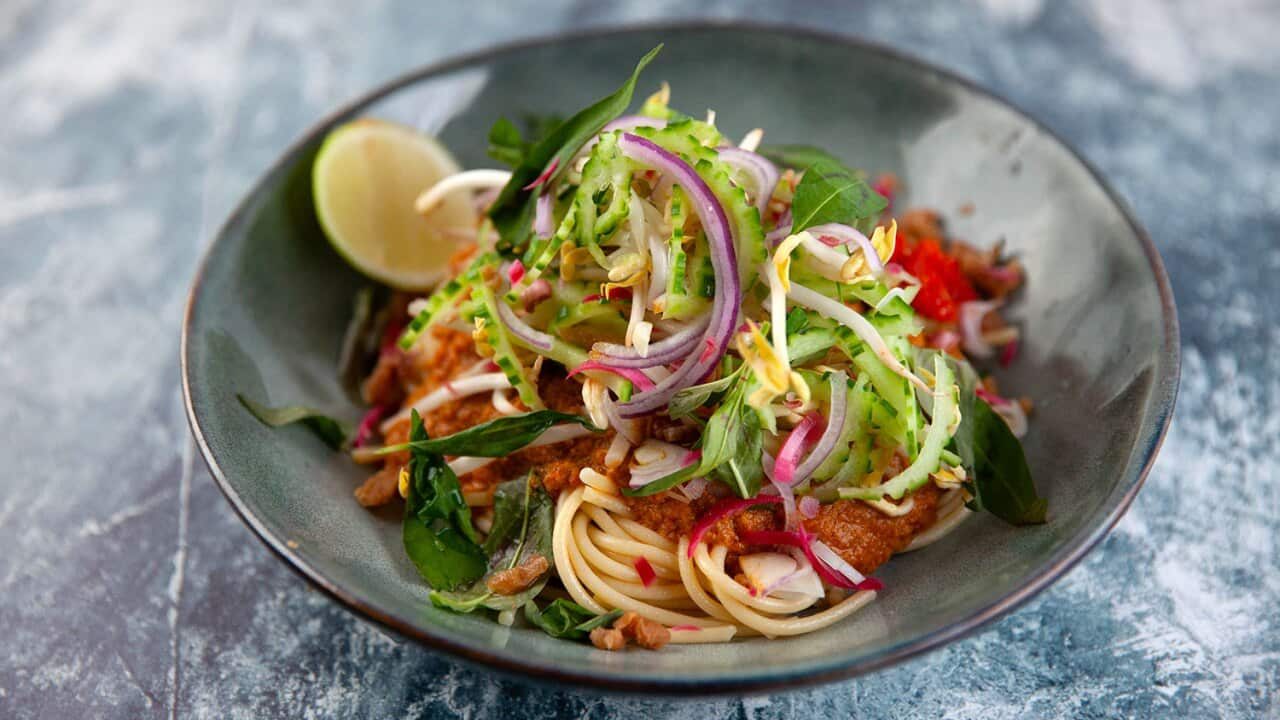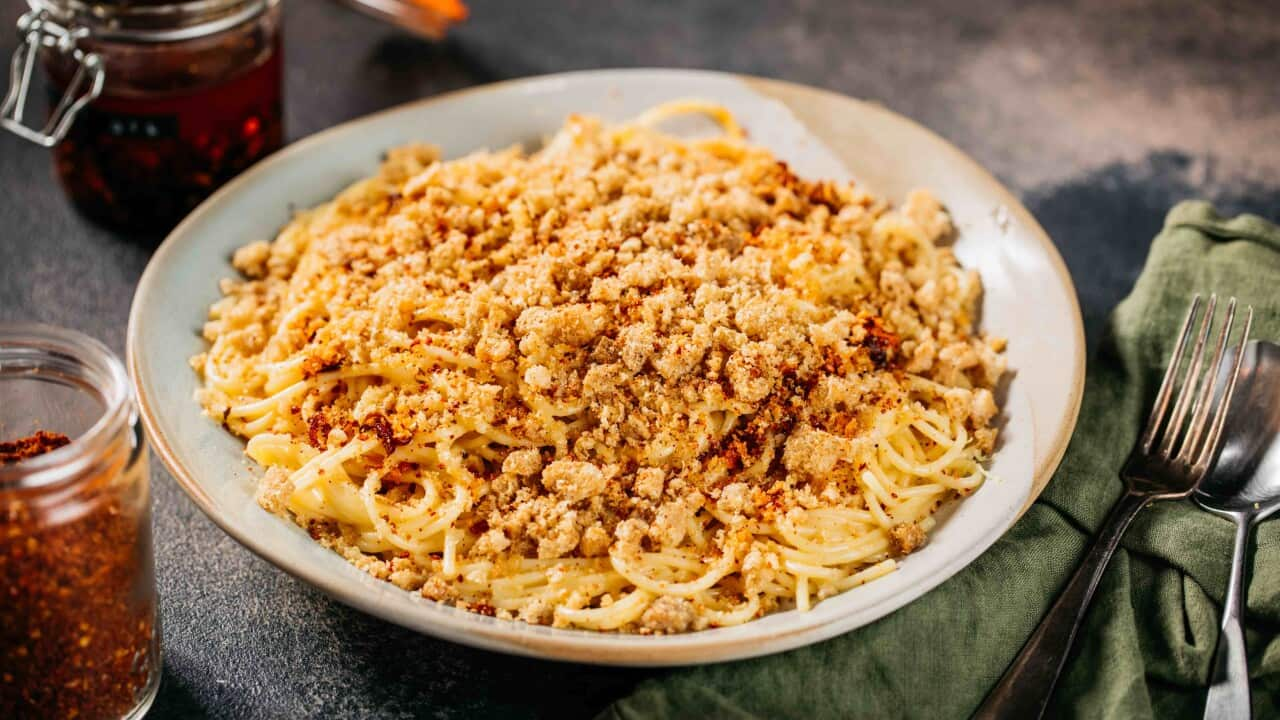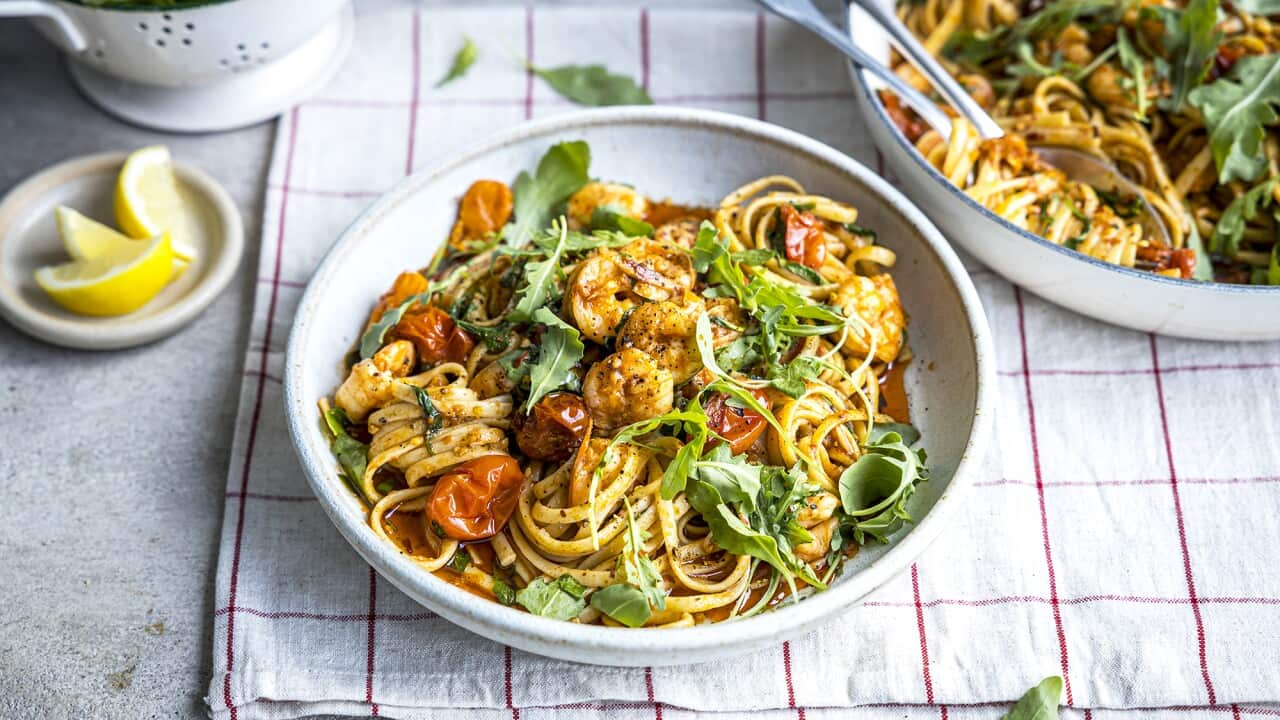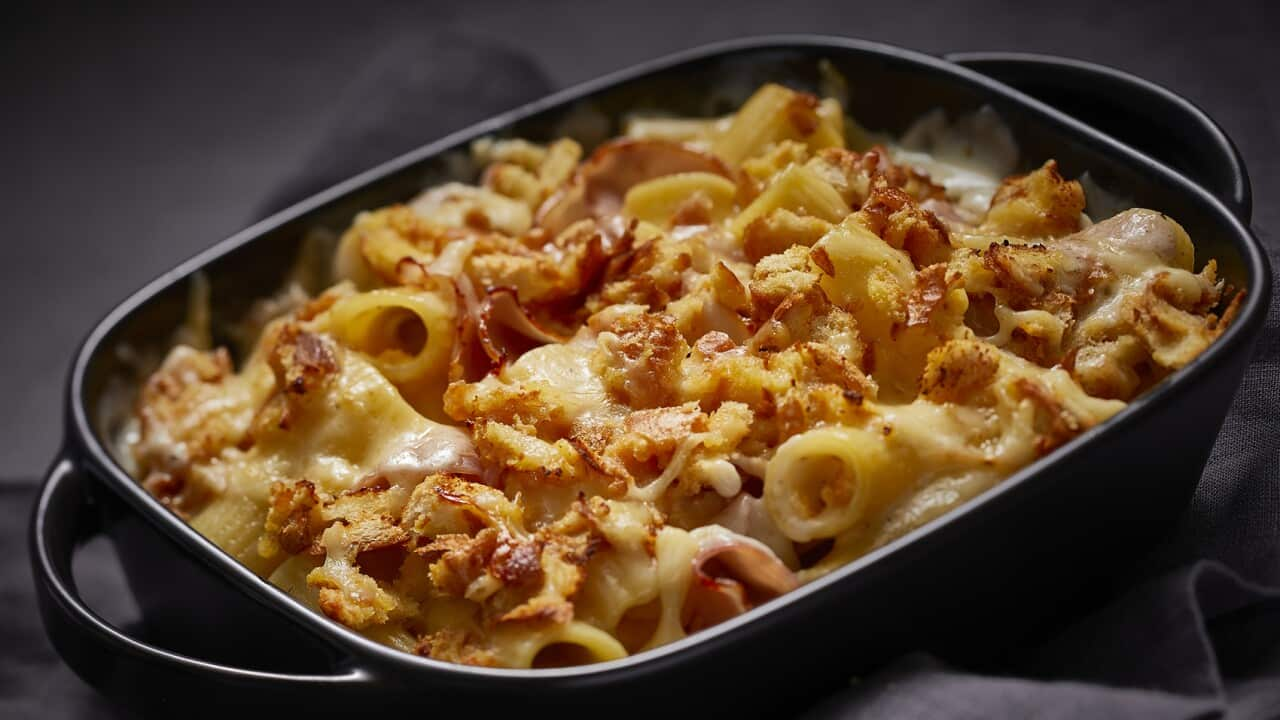Somalia’s suugo, Philippines’ sopas and Malaysia’s laksa Johor all have one thing in common: pasta (to use an umbrella term). But the more interesting questions are why and how these seemingly unrelated countries have dishes with an ingredient typically associated with Italy.
Sometimes, the Italian influence is obvious, because Italy colonised parts of North and East Africa. This explains Libya’s , which can be described as a spiced stew with pasta. And Somalia’s , made with penne and a tomato-y sauce with warming spices like cumin. Other times it is filtered through other colonial forces such as the United States and Britain, who introduced and popularised pasta in countries like the Philippines and Hong Kong respectively. Strands of wheat-based noodles have long been a staple in Asian-style cooking – with influences from – but when cooking with pasta and its varied shapes, the local communities have cooked it with readily available ingredients, herbs and spices, creating new, fusion dishes.
For example, macaroni features in sopas, a home-style dish that you are unlikely to find in Filipino restaurants in Australia or even in the Philippines. Filipino-Australian Kristen Carao explains it as a dish that mums or grandmas would cook during the rainy season or when someone was sick. “It has elbow macaroni, onions, carrot, shredded chicken, chicken broth and evaporated milk. It’s a hearty comfort food.”
The Philippines is not the only culture to use elbow macaroni in soup. Quentin Dai, who runs in Sydney with his parents, gives a detailed breakdown of the Hong Kong macaroni soup, which is thick and creamy and unlike other Chinese-style soups, which are clear and light. “Macaroni soup is a staple in Hong Kong especially for breakfasts in the . It comes from British colonisation, during which Western ingredients like ham, Campbell’s soup, peas and macaroni were introduced to the island.” Dai’s version at the cafe does not have Campbell’s soup. Instead, the family boils chicken stock for 12 hours and infuses it with evaporated milk for that velvety, creamy texture.
, a historian who focuses on the history of Italian food and migrants in Australia explains that industrialisation is one of the reason for pasta’s global reach. “In the late 18th century, pasta went from being freshly made to mass produced. The process of drying the pasta means it became easy to make and transport on a big scale.” The English cottoned on to this and some expeditions used it as seafaring food. “It was shelf-stable and quick and easy to make,” Dr. Cammarano expands.
Colonisation, trade and migration are not the only ways that food travels and fuses with a new culture. “Sometimes, cookbooks can spread recipes,” Dr. Cammarano says. She points to , a popular book in Victorian Britain which includes English-style pasta dishes. “Other times, rich people travelled and brought food back with them.” This is the supposed origin for , a dry style laksa from the south of Malaysia, made with spaghetti and topped with gravy which includes seafood, chili and coconut milk. As the story goes, the Sultan of Johor encountered spaghetti in Italy, brought it back and asked his chefs to make something to go with it.
As pasta traverses cultures and borders, it becomes enmeshed in the local cuisine, and it’s link to Italy becomes more tenuous. Growing up, neither Carao nor Dai thought about why they eat macaroni in creamy soups, rather than an Italian style macaroni-and-cheese combo, perhaps because macaroni is simply the starch element in an otherwise localised soup.
The same goes for Filipino spaghetti, which Carao describes as special occasion or party food because it is usually cooked for a large crowd. “It’s a bit like a spaghetti bolognese, made with tomato paste, tomato sauce from a jar, mince meat, cut up hot dogs, parmesan and sugar,” she explains. It is a bit sticky-sweet, which caters to the local taste.
Dai expands on further uses for spaghetti in Hong Kong cuisine. “There’s fried spaghetti, made with a bolognese sauce which has tomatoes, carrots and soy sauce.” This sauce makes an appearance in other dishes and is sometimes served with rice and egg.
The only time Dai wondered why his family uses spaghetti or macaroni this way is when he had friends over and realised that other families cook it differently. “My friends said they eat pasta with cheese. That’s the only time I thought [macaroni soup] was unusual,” Dai reminisces.
So how do Italians feel about these varied ways of eating pasta, which is nothing like how they might prepare and eat it? Depends on who you ask. Ariele Cattaneo grew up in Italy and is now the co-owner and pizza chef of in Melbourne. After living in Australia for more than a decade, he has become intrigued by different interpretations of Italian classic food, particularly Asian-style Italian food. “Italian food is simple and efficient. We use a few, good quality ingredients and never mix seafood with cheese. But I read about Japanese restaurants here selling udon carbonara and thought maybe that’s something I’d like to try,” he says. It perfectly encapsulates changing attitudes towards a fiercely Italian ingredient.













